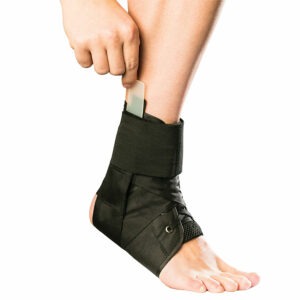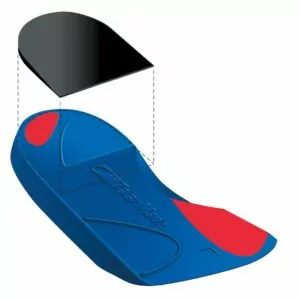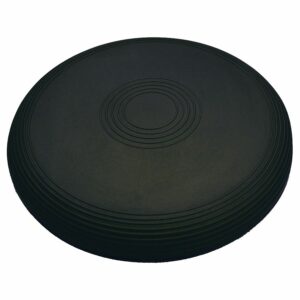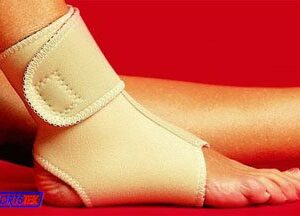Distal Tibiofibular Joint Injury
Updated:
(Also known as Inferior Tibiofibular Joint Injury)
What is a distal tibiofibular joint injury?
The tibia and fibula are the two long bones of the lower leg (figure 1). Together, these bones form a joint known as the distal tibiofibular joint (or inferior tibiofibular joint – ITFJ) which lies just above the ankle (figure 1). Here the tibia and fibula are connected by strong connective tissue and ligaments. This connective tissue helps to keep the tibia and fibula together. When this connective tissue is placed under too much stress, tearing of the connective tissue can occur. This is known as a distal tibiofibular joint injury and can range from a small tear resulting in minimal pain, to a complete tear resulting in significant pain and disability.
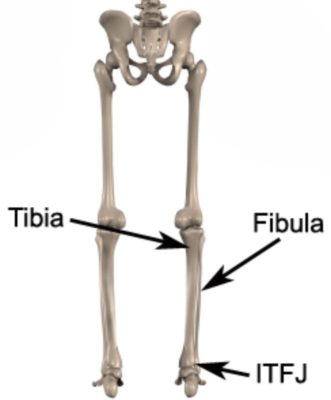
Figure 1 – Relevant Anatomy for a Distal Tibiofibular Joint Injury
Causes of a distal tibiofibular joint injury
Distal tibiofibular joint injuries typically occur traumatically during more severe ankle sprains whereby forces push the tibia and fibular apart.
Signs and symptoms of a distal tibiofibular joint injury
Patients with this condition usually experience a sudden onset of pain during the causative activity. Symptoms may increase during weight-bearing activity and on rotation or twisting of the ankle. The patient may be unable to weight bear at the time of injury due to pain and may develop bruising and stiffness over the coming days. Symptoms are commonly felt in the front of the ankle, although occasionally the back and / or sides of the ankle may be affected. Pain may also increase on firmly touching the distal tibiofibular joint (figure 1).
Diagnosis of a distal tibiofibular joint injury
A thorough subjective and objective examination from a physiotherapist is usually sufficient to diagnose a distal tibiofibular joint injury. Investigations such as an X-ray, MRI or CT scan are often required to confirm diagnosis and rule out other injuries (particularly fractures)
Prognosis of a distal tibiofibular joint injury
Most patients with minor distal tibiofibular joint injuries heal well with an appropriate physiotherapy program. In these instances recovery is usually a matter of weeks. Patients with more severe injuries whereby the tibia and fibula are separated on X-ray may require surgery with a lengthy rehabilitation period to follow. It is important that this is detected early as untreated severe injuries may rapidly lead to ankle joint arthritis. It is therefore recommended that all patients see their physiotherapist as soon as possible for accurate assessment and diagnosis.
Treatment of a distal tibiofibular joint injury
Most patients with minor to moderate distal tibiofibular joint injuries heal well with appropriate physiotherapy. The success rate of treatment is largely dictated by patient compliance. One of the key components of treatment is that the patient allows their body to heal naturally by avoiding activities that further damage the affected tissue. The patient can determine if an activity damages or aggravates their condition based on their symptoms. Generally an activity aggravates the condition if:
- Pain increases during that activity OR
- Pain increases upon rest following that activity OR
- Pain increases the morning after that activity.
It is therefore vital that the patient rests from any activity that increases their pain during activity, after activity or the following morning.
Appropriate treatment in the first 48 – 72 hours is vital to reduce bleeding, swelling and inflammation. This should involve following the R.I.C.E regime which comprises of rest from aggravating activity (crutches or an Ankle Brace are often required), regular icing, the use of a compression bandage and elevation of the affected limb. Anti-inflammatory medication may also be particularly useful in this early phase.
It is also important to perform pain free flexibility, strengthening and balance exercises early in the rehabilitation process to prevent stiffness, weakness and instability from developing and to ensure the ankle is functioning correctly. These exercises should be implemented as soon as pain allows and under guidance by the treating physiotherapist. A gradual return to activity should occur once the patient is pain-free, provided symptoms do not increase.
Physiotherapy for a distal tibiofibular joint injury
Physiotherapy treatment is vital for all patients with a distal tibiofibular joint injury. Treatment can hasten the healing process, reduce the likelihood of recurrence and ensure an optimal outcome. Treatment may comprise:
- soft tissue massage
- electrotherapy (e.g. ultrasound)
- anti-inflammatory advice
- joint mobilization
- ankle taping
- ankle bracing
- ice or heat treatment
- exercises to improve flexibility, strength and balance
- education
- activity modification advice
- prescription of crutches
- the use of heel wedges
- biomechanical correction
- a gradual return to activity program
Other intervention for a distal tibiofibular joint injury
Despite appropriate physiotherapy management, some patients with a distal tibiofibular joint injury do not improve adequately. When this occurs the treating physiotherapist or doctor can advise on the best course of management. This may involve investigations such as an X-ray, CT scan or MRI, pharmaceutical intervention, corticosteroid injection or review with a specialist who can advise on any procedures that may be appropriate to improve the condition.
Exercises for a distal tibiofibular joint injury
The following exercises are commonly prescribed to patients with a distal tibiofibular joint injury. You should discuss the suitability of these exercises with your physiotherapist prior to beginning them. Generally, they should be performed 3 times daily and only provided they do not cause or increase symptoms.
Foot and Ankle Up and Down
Move your foot and ankle up and down as far as possible and comfortable without pain (figure 2). Repeat 10 – 20 times provided there is no increase in symptoms.
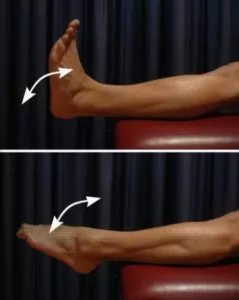
Foot and Ankle In and Out
Move your foot and ankle in and out as far as possible and comfortable without pain (figure 3). Repeat 10 -20 times provided there is no increase in symptoms.
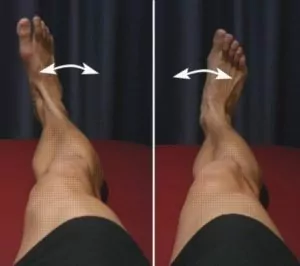
Find a Physio for a distal tibiofibular joint injury
Find a Physiotherapist in your local area who can treat a distal tibiofibular joint injury.
Physiotherapy products for a distal tibiofibular joint injury
Some of the most commonly recommended products by physiotherapists to hasten healing and speed recovery in patients with a distal tibiofibular joint injury include:
To purchase physiotherapy products for a distal tibiofibular joint injury click on one of the above links or visit the PhysioAdvisor Shop.
More information
- View more Ankle Stretches.
- View Ankle Strengthening Exercises.
- View Balance Exercises.
- View Ankle Taping Techniques.
- View our Ankle Diagnosis Guide.

Link to this Page
If you would like to link to this article on your website, simply copy the code below and add it to your page:
<a href="https://physioadvisor.com.au/injuries/ankle/distal-tibiofibular-joint-injury”>Distal Tibiofibular Joint Injury – PhysioAdvisor.com</a><br/>PhysioAdvisor offers detailed physiotherapy information on distal tibiofibular joint injuries including: causes, symptoms, diagnosis, treatment, exercises, physiotherapy products and more...
Return to the top of Distal Tibiofibular Joint Injury.

